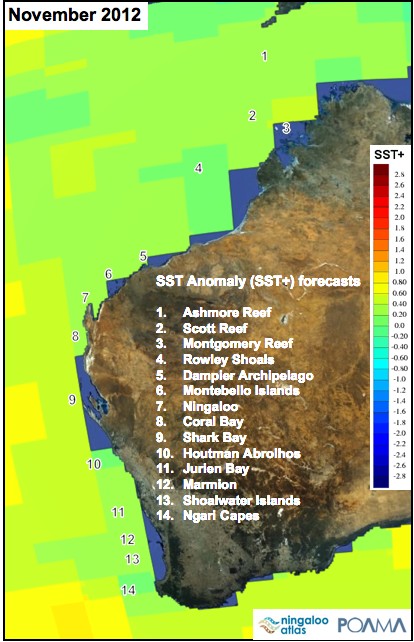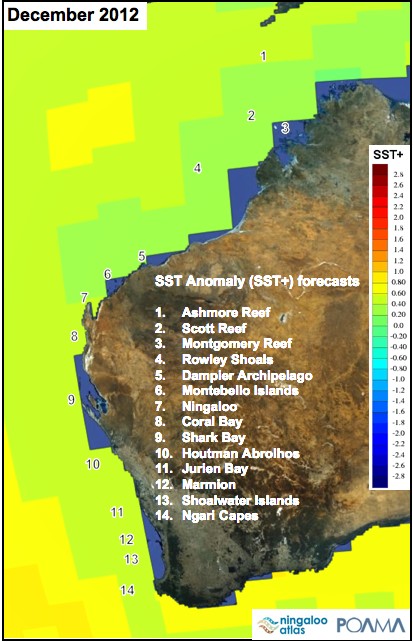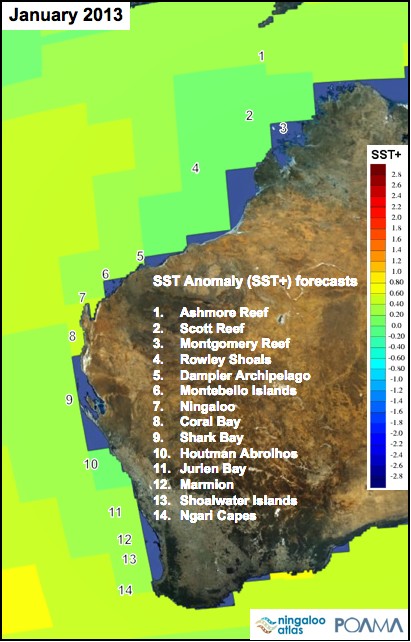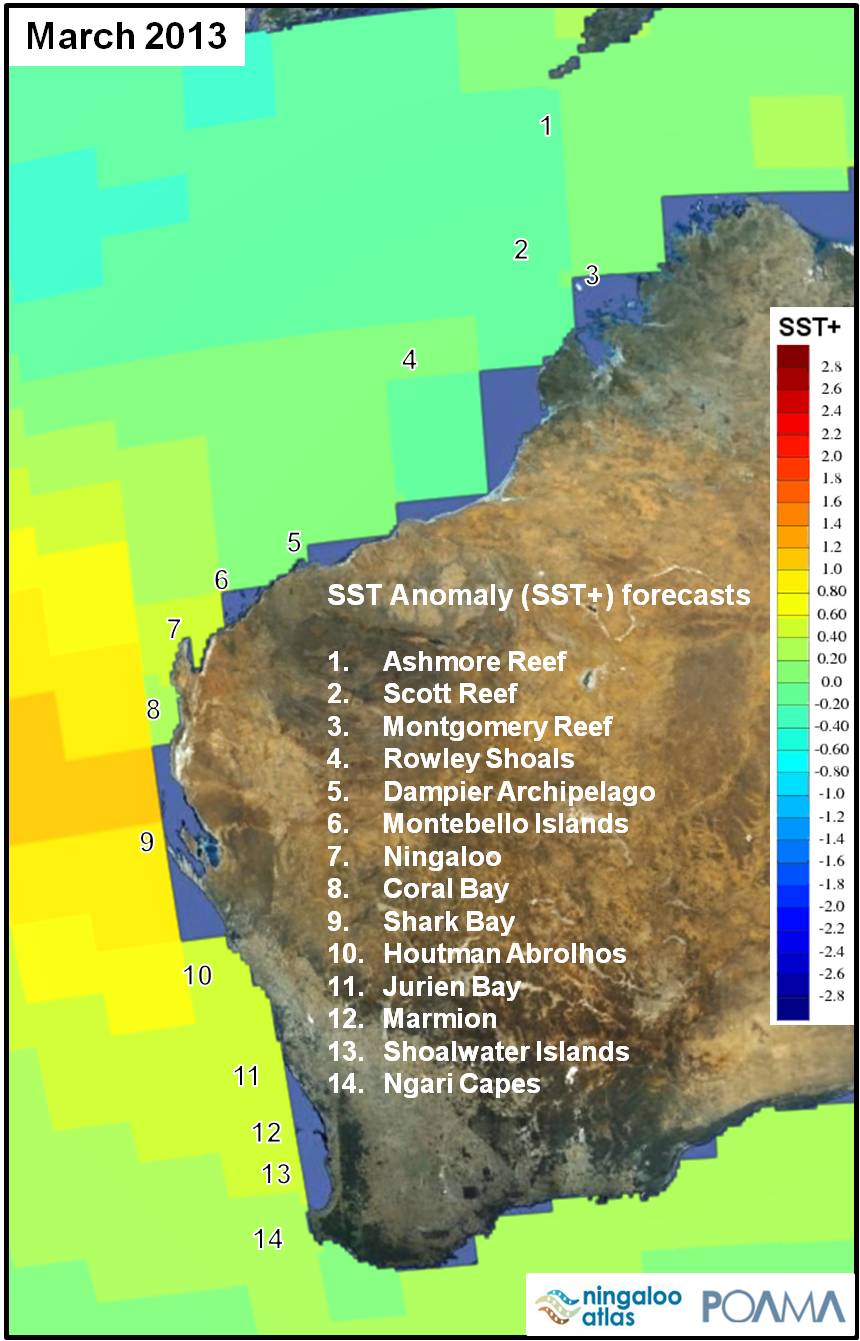Home > Browse by Themes > Threats > Summer 2012/13 coral bleaching outlook
Summer 2012/13 coral bleaching outlook
- Ningaloo Atlas
- Australian Institute of Marine Science
Coral bleaching likelihood is largely determined by sea temperatures, whereby coral bleaching events are usually caused by long periods (usually 4 to 8 weeks) of warmer than average summer Sea Surface Temperatures (SSTs). The information provided here is for for 14 locations in Western Australia which are based on the locations of the NOAA Coral Reef Watch virtual stations.
The Predictive Oceanic and Atmospheric Model for Australia (POAMA)
POAMA SST forecasts are produced for up to six months into the future, with significant skill in predictions up to three months ahead. SST anomalies (SST+) are calculated as the difference between SST values and the monthly long term mean SST. As such, POAMA provides a seasonal outlook in the months leading up to summer, and based on research from the Great Barrier Reef, probabilistic forecasts of the likelihood of SST+ values exceeding 0.6 degree Celsius result in potential coral bleaching conditions.
| click image for larger image view | |||||
|
November 2012 |
December 2012 |
January 2013 |
February 2013 |
March 2013 |
April 2013 |
Figure 1. Monthly POAMA SST+ forecast for Western Australia - November 2012 to April 2013. Data extracted and reworked from http://poama.bom.gov.au/gearth/gearth.shtml. |
|||||
NOAA's Coral Reef Watch Program (CRW)
NOAA's satellites measure SST in near-real-time (~50 km resolution), and CRW uses this information to pinpoint areas around the world where corals are at risk for bleaching. CRW provides near-real time reef temperature conditions to quickly identify areas at risk for coral bleaching. NOAA has up to 14 virtual stations along the Western Australia coastline.
CRW’s degree heating weeks (DHW) is an accumulation of any temperature anomalies greater than 1°C over a 12-week window, which shows how stressful conditions have been for corals in the last three months. DHW is therefore a cumulative measurement of the intensity and duration of thermal stress, and is expressed in the unit °C-weeks. Based on previous bleaching observations worldwide, evidence suggest that 4°C-weeks results in bleaching and that 8°C-weeks and above result in widespread bleaching.
Table 1. Monthly DHW and Bleaching Alerts for Western Australia - December 2012 to May 2013. Data for current month is updated weekly. Data for past months represents the DHW values for the end of that month but weekly archives appear by date below the table. Data extracted and reworked from http://coralreefwatch.noaa.gov/satellite/vs/index.html and http://coralreefwatch.noaa.gov/satellite/vs_added/vs_wa_list_data.html. |
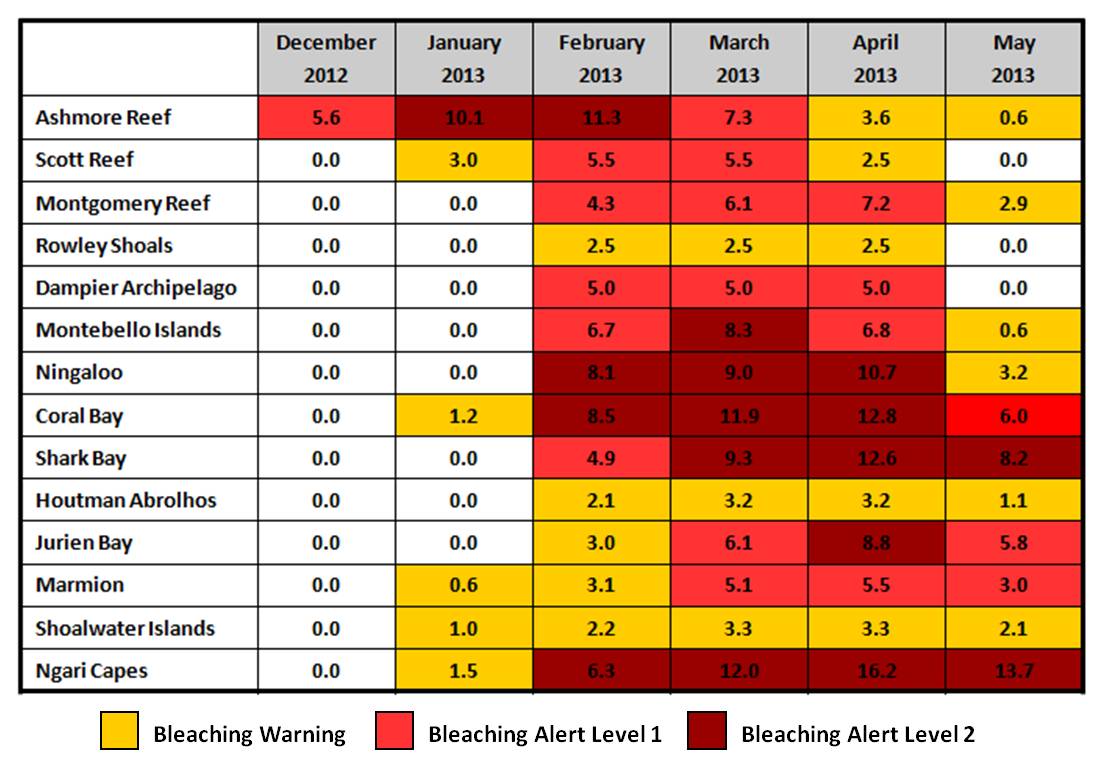 |
For SST, SST+, Hotspot, and DHW for the 14 NOAA Coral Reef Watch virtual stations in Western Australia from December 2000 to November 2012, see the attachment below (wa-bleaching-stations.xls).
For more information on the technical information and methodology of the SST products, visit POAMA, and CRW.

